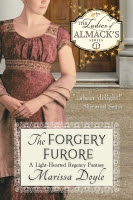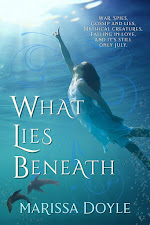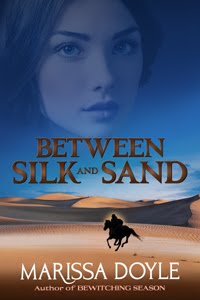Today’s post is a re-run of a
post from April 2011—a re-run because I’m busy today celebrating my 30th
wedding anniversary with my dear husband. Though my wedding was nothing like Queen Victoria’s (I
emphatically did not have a wedding cake nine feet in diameter!), I, like the
little queen, was—and still am— “so very happy!”
Enjoy!
Surely one of the most momentous royal weddings of the 19th century was that of Queen Victoria to Prince Albert of Saxe-Coburg and Gotha. Victoria had proposed to her cousin in October—as a reigning monarch, she far outranked him—and the wedding was set for February 10, 1840—a scant three months later. Victoria had hoped for a private wedding, but her prime minister, Lord Melbourne, over-ruled her and so it was the first public royal wedding in decades—since George III’s wedding, back in 1761. The weather was beastly that morning, but it didn’t dampen the enthusiasm of the crowds of people who came out to watch the queen drive from Buckingham Palace to the Chapel Royal at St. James’s Palace. The Chapel was stuffed with as many seats as possible for visiting dignitaries and as much of the whiggish side of the British nobility as possible (of the Tory nobility, only the Duke of Wellington and Lord Liverpool, a former prime minister, were invited).
 Albert,
dressed as a British Field Marshal, entered the chapel first, and
awaited Victoria, who walked down the aisle on the arm of her uncle, the
Duke of Sussex. Her dress (viewable in the London Museum) was of her
own design and fairly simple, of British-made white satin with a trim of
orange blossoms. Her veil, worn with a wreath of orange blossoms, was
literally one of a kind: it was made by lacemakers in Devon, and the
design was destroyed so that the pattern could never be copied. She wore
her Turkish diamond necklace and earrings and a sapphire brooch Albert
gave her as a wedding present.
Albert,
dressed as a British Field Marshal, entered the chapel first, and
awaited Victoria, who walked down the aisle on the arm of her uncle, the
Duke of Sussex. Her dress (viewable in the London Museum) was of her
own design and fairly simple, of British-made white satin with a trim of
orange blossoms. Her veil, worn with a wreath of orange blossoms, was
literally one of a kind: it was made by lacemakers in Devon, and the
design was destroyed so that the pattern could never be copied. She wore
her Turkish diamond necklace and earrings and a sapphire brooch Albert
gave her as a wedding present.There were a multiplicity of clergy on hand, with the Archbishops of Canterbury and York and the Bishop of London all there to officiate. What there hadn’t been was a rehearsal, so that the dowager queen Adelaide was heard whispering to Albert about the proper order of the procession, and Victoria’s twelve bridesmaids (dressed in simple gowns also of Victoria’s design, with wreaths of white roses on their heads) struggled to hold onto the queen’s short train without stumbling over each other. Though Albert often seemed unsure and agitated—his English was not very good at this point, so following the service may have been difficult—Victoria was poised and calm and, as she wrote in her journal, “so very happy!” There were amusing family touches, too: Victoria’s uncle the Duke of Cambridge kept up a very audible, if cheerful, commentary on the proceedings. Her uncle Sussex, who gave her away, still wore his customary black skullcap which he always wore to keep his head warm. And like many mothers of brides, the Duchess of Kent was seen to shed tears.
 After the ceremony the married pair returned to Buckingham Palace for a
small wedding breakfast (relatively speaking) of family members and
their households, the prime minister and a handful of cabinet members,
the Royal Household, and the Archbishop of Canterbury and the Bishop of
London. Over a hundred wedding cakes were made, to distribute to various
family members, Royal Household members, officers of state, and foreign
ambassadors. The main cake was nine feet across and sixteen inches
high, and decorated with all sorts of allegorical symbols of marriage
and of the queen…oh for a photograph! And then it was time to change
(Victoria wore a white satin cloak trimmed with swan’s down and a white
velvet bonnet with plumes and Brussels lace) and head off to Windsor for
their two-day honeymoon. Yes, two days. As Victoria reminded Albert,
“You forget, my dearest Love, that I am the Sovereign and that business
can stop and wait for nothing.” Not even true love, it seems!
After the ceremony the married pair returned to Buckingham Palace for a
small wedding breakfast (relatively speaking) of family members and
their households, the prime minister and a handful of cabinet members,
the Royal Household, and the Archbishop of Canterbury and the Bishop of
London. Over a hundred wedding cakes were made, to distribute to various
family members, Royal Household members, officers of state, and foreign
ambassadors. The main cake was nine feet across and sixteen inches
high, and decorated with all sorts of allegorical symbols of marriage
and of the queen…oh for a photograph! And then it was time to change
(Victoria wore a white satin cloak trimmed with swan’s down and a white
velvet bonnet with plumes and Brussels lace) and head off to Windsor for
their two-day honeymoon. Yes, two days. As Victoria reminded Albert,
“You forget, my dearest Love, that I am the Sovereign and that business
can stop and wait for nothing.” Not even true love, it seems!






No comments:
Post a Comment